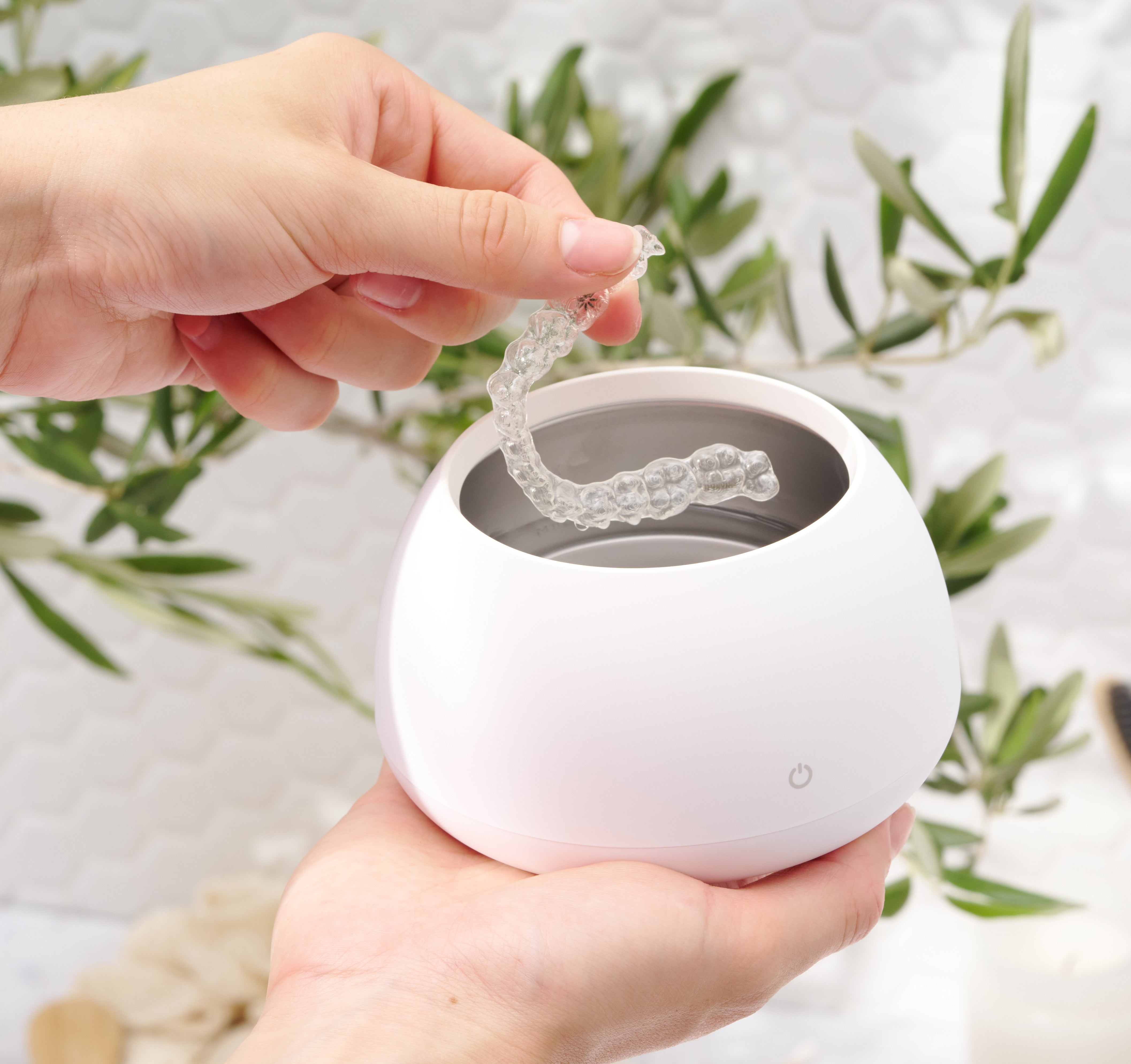
What can the Dental Pod clean? (2025)
How did we test the Dental Pod?
Cleaning your oral appliance effectively and safely with the Dental Pod is the top priority for us at Zima Dental. We have rigorously tested over 50 different oral appliance variations using the following 3 step process:
-
Cleaning Exposure: We ran each oral appliance variant through 30 cleaning cycles in the Dental Pod.
-
Safety Assessment: Using 3D scanning, our team thoroughly checked each appliance for superficial damage, microscopic abrasions, and appliance shape or volume changes.
- Long-Term Assessment: We followed up with the owners of each appliance for up to 3 months, to ensure their oral appliance continued to operate as expected.
Can the Dental Pod clean my aligner?
Aligners, including those from Invisalign, Byte and Smile Direct Club, can be safely and effectively cleaned with the Dental Pod
The majority of clear aligners are made from medical-grade polyurethane resins, which are susceptible to damage from cleaning techniques such as brushing. Since the Dental Pod doesn't rely on physical scrubbing, there's no risk of causing micro-abrasions or any deformities to the aligners.
The material Invisalign aligners are made from, SmartTrack, is particularly well suited to being cleaned with the Dental Pod.
Can the Dental Pod clean my retainer?
Retainers, including Hawley, Essix and Vivera retainers, can be safely and effectively cleaned with the Dental Pod
1. Hawley Retainers (Wire and Acrylic):
Cleaning Hawley retainers with the Dental Pod is safer than other cleaning methods, including brushing, because it minimises the risk of physical damage and wear to the retainer. Brushing, especially with abrasive toothpaste or a hard-bristled brush, can scratch the acrylic surface or distort the delicate metal components of the retainer. Scratches can become harboring spots for bacteria, leading to odor and potential oral health risks.
2. Clear Plastic Retainers (e.g., Essix, Vivera):
Cleaning clear plastic retainers with an ultrasonic method is considered safer than other cleaning techniques, such as brushing, because it effectively removes debris and bacteria without causing abrasive damage. Traditional brushing, particularly with harsh toothpastes or a firm brush, can introduce micro-scratches into the clear plastic, compromising its transparency and providing niches for bacterial growth.
Can the Dental Pod clean my dentures?
Dentures, including complete (full), immediate, and partial dentures, can be safely and effectively cleaned with the Dental Pod
1. Complete (full) dentures:
Cleaning complete dentures using the Dental Pod is superior and safer compared to conventional cleaning methods like brushing. Complete dentures have a broad surface area that conforms to the shape of the user's gums and palate. Ultrasonic cleaners generate millions of microbubbles that penetrate all of these extensive surfaces, ensuring thorough cleaning. Additionally, users of complete dentures often employ adhesives for extra security. Over time, remnants of these adhesives can become a cleaning challenge. Ultrasonic waves break down and remove adhesive residues, ensuring the denture's surface is smooth and comfortable against the gums.
2. Immediate dentures:
Cleaning immediate dentures using the ultrasonic method is markedly safer and more effective than traditional cleaning techniques like brushing. In the aftermath of tooth extraction, the oral cavity, especially the gums, can be sensitive. Immediate dentures are exposed to blood, tissue remnants, and other surgical residues. Ultrasonic cleaners like the Dental Pod effectively remove these residues without requiring aggressive scrubbing that might damage the delicate tissues of the new denture.
3. Partial dentures:
Cleaning partial dentures using the ultrasonic method stands out as both safer and more effective compared to traditional methods. When partial dentures, which are designed to fit alongside remaining natural teeth, are brushed using abrasive cleaners or hard-bristled brushes, they can develop micro-scratches on their surface. These tiny abrasions not only affect the aesthetics of the dentures but can also become a refuge for bacteria and fungi, potentially leading to odors or oral infections.
Flippers, flexible, nitrogen-charged, over and hybrid dentures (and more) were also safely tested in the Dental Pod.
Can the Dental Pod clean my mouthguard?
Mouthguards, including those made by Opro and Safejawz, can be safely and effectively cleaned with the Dental Pod
Cleaning mouthguards using ultrasonic waves is significantly faster and more effective than traditional methods. During rigorous sports activities, mouthguards are exposed not just to saliva but often to sweat as well. This makes them a potential breeding ground for a wide range of microbes. Furthermore, due to their bulkier design, aimed at absorbing shocks, mouthguards have a larger surface area with more grooves and contours than other oral appliances. These factors combined mean that improper cleaning could pose a significant threat to oral health. Fortunately, the Dental Pods' capacity to break down biofilm and remove debris ensures that mouthguards remain hygienic and free from plaque or bacteria build-up.
Can the Dental Pod clean my night guard?
Hard, soft and duel laminate night guards can all be safely and effectively cleaned with the Dental Pod
1. Hard night guards:
Cleaning hard night guards with an ultrasonic cleaner is by far the safest and most effective method. The rigid structure of hard night guards means they possess microscopic crevices and pores. Manual brushing might glide over these without effectively cleaning them. The Dental Pod works by producing high-frequency sound waves that generate millions of microbubbles. When these bubbles collapse (a process called cavitation), they produce a powerful yet microscopic cleaning action, reaching into the tiniest crevices and dislodging debris and bacteria.
2. Soft night guards:
Cleaning soft night guards with ultrasonic cleaners is significantly more effective than techniques like brushing. Soft night guards often mold closely to the teeth, leading to finer grooves and imprints of the dental structure. These intricate patterns can trap debris and bacteria. Fortunately, the microbubbles generated by the Dental Pod can penetrate these fine grooves, ensuring a comprehensive clean. Furthermore, soft night guards can absorb and retain more saliva and moisture, leading to potential odor issues if not cleaned properly. The thorough cleaning action of ultrasonic waves ensures that all residues and contaminants are removed, keeping the guard fresh and odor-free.
3. Duel laminate night guards:
Cleaning duel laminate night guards with an ultrasonic cleaner is a sensible and effective solution for keeping them clean. One key aspect of dual laminate guards is the bond between the soft and hard layers. Manual cleaning techniques or using the wrong chemicals can weaken this bond over time. The Dental Pod, with it's non-aggressive approach, helps in maintaining this bond, ensuring the night guard remains intact and functional for a long time.
Snore, sleep-apneaa and bruxism guards (and more) were also safely tested in the Dental Pod.
For more information, please don’t hesitate to contact Zima Dental customer support at support@zimadental.co







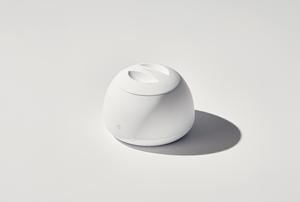
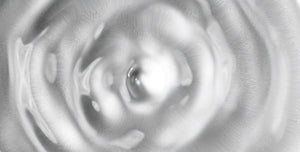
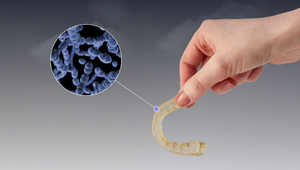
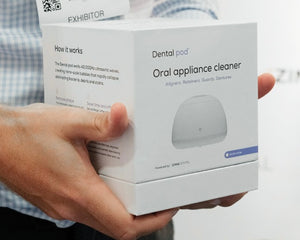




1 Comment
Can I clean my bleaching trays in the Zima?
Leave a Comment